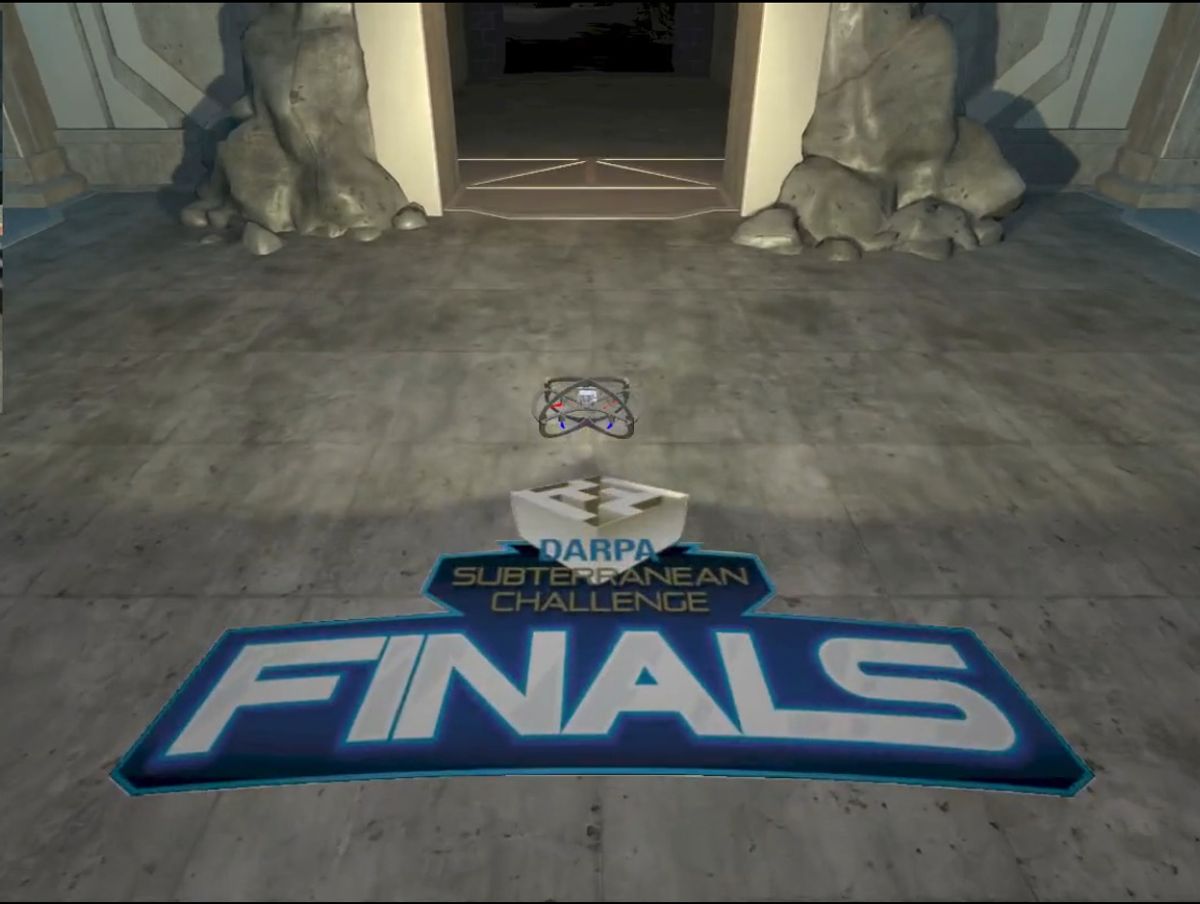Last week, DARPA announced the twelve teams who will be competing in the Virtual Track of the DARPA Subterranean Challenge Finals, scheduled to take place in September in Louisville, KY. The robots and the environment may be virtual, but the prize money is very real, with $1.5 million of DARPA cash on the table for the teams who are able to find the most subterranean artifacts in the shortest amount of time.
You can check out the list of Virtual Track competitors here, but we’ll be paying particularly close attention to Team Coordinated Robotics and Team BARCS, who have been trading first and second place back and forth across the three previous competitions. But there are many other strong contenders, and since nearly a year will have passed between the Final and the previous Cave Circuit, there’s been plenty of time for all teams to have developed creative new ideas and improvements.
As a quick reminder, the SubT Final will include elements of tunnels, caves, and the urban underground. As before, teams will be using simulated models of real robots to explore the environment looking for artifacts (like injured survivors, cell phones, backpacks, and even hazardous gas), and they’ll have to manage things like austere navigation, degraded sensing and communication, dynamic obstacles, and rough terrain.
While we’re not sure exactly what the Virtual Track is going to look like, one of the exciting aspects of a virtual competition like this is how DARPA is not constrained by things like available physical space or funding. They could make a virtual course that incorporates the inside of the Egyptian pyramids, the Cheyenne Mountain military complex, and my basement, if they were so inclined. We are expecting a combination of the overall themes of the three previous virtual courses (tunnel, cave, and urban), but connected up somehow, and likely with a few surprises thrown in for good measure.
To some extent, the Virtual Track represents the best case scenario for SubT robots, in the sense that fewer things will just spontaneously go wrong. This is something of a compromise, since things very often spontaneously go wrong when you’re dealing with real robots in the real world. This is not to diminish the challenges of the Virtual Track in the least—even the virtual robots aren’t invincible, and their software will need to keep them from running into simulated walls or falling down simulated stairs. But as far as I know, the virtual robots will not experience damage during transport to the event, electronics shorting, motors burning out, emergency stop buttons being accidentally pressed, and that sort of thing. If anything, this makes the Virtual Track more exciting to watch, because you’re seeing teams of virtual robots on their absolute best behavior challenging each other primarily on the cleverness and efficiency of their programmers.
The other reason that the Virtual Track is more exciting is that unlike the Systems Track, there are no humans in the loop at all. Teams submit their software to DARPA, and then sit back and relax (or not) and watch their robots compete all by themselves in real time. This is a hugely ambitious way to do things, because a single human even a little bit in the loop can provide the kind of critical contextual world knowledge and mission perspective that robots often lack. A human in there somewhere is fine in the near to medium term, but full autonomy is the dream.
As for the Systems Track (which involves real robots on the physical course in Louisville), we’re not yet sure who all of the final competitors will be. The pandemic has made travel complicated, and some international teams aren’t yet sure whether they’ll be able to make it. Either way, we’ll be there at the end of September, when we’ll be able to watch both the Systems and Virtual Track teams compete for the SubT Final championship.
Evan Ackerman is a senior editor at IEEE Spectrum. Since 2007, he has written over 6,000 articles on robotics and technology. He has a degree in Martian geology and is excellent at playing bagpipes.



